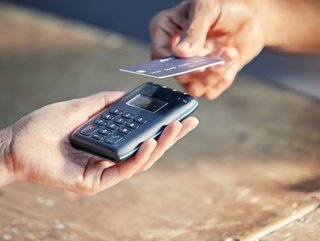Does a cashless society mean higher risk of fraud?


Can you tell me about Outseer?
Outseer prevents fraud before it occurs. People are buying more online than ever before, with no signs of slowing – by the end of 2022, global online shopping sales are expected to reach an astounding £4.4 trillion. While this digital convenience is great for consumers, it’s a double-edge sword. Fraud is on the rise, with phoney websites, mobile apps, and social media accounts running rife, tricking customers into authorising money transfers, giving away sensitive information, or revealing login credentials.
Brands are faced with tackling the steep increase in fraud, without damaging the customer journey. Often, putting security first can hinder the customer’s digital experience, as they are faced with frustrating step-up challenges and transaction declines that can send customers fleeing to competitors. On the other hand, prioritising the digital experience opens the door to fraud, resulting in huge losses for customers and brands alike. But this is where Outseer steps in. Powered by AI and machine learning (ML) technology, we analyse millions of transactions per day, scan for fraudulent URLs, scour social media, and monitor app stores to identify and stop fraudsters before they can do harm to customers and brands. We identify which transactions are authentic, and which are fraudulent, with low customer intervention – the sweet spot in fraud detection.
What is your role and responsibilities at the company?
I was brought in to Outseer before the company launched, back in early 2021. I quickly hired a marketing team (communications, product marketing, growth marketing, and brand) to successfully launch Outseer as a standalone company in June 2021. My current duties include managing all of our marketing efforts, including the Stop Fraud Not Customers brand activation campaign, which recently launched in Charlotte, London, and New York City.
As the NCSC has called for views from the tech industry on how to protect consumers from fraudulent apps, how do you think they can protect themselves?
Malicious apps are designed to impersonate trusted brands, and are used by cybercriminals to swipe cash either through stolen information or fraudulent app sales. These apps can be incredibly difficult to spot – in fact, Outseer’s latest fraud data shows that rogue apps make up 39% of all fraud globally, and attacks rose by 50% over Q3 2021.
Detecting these attacks can be extremely difficult when traditional security measures fail, but there are a few tell-tale signs of rogue apps that consumers must be wary of to protect themselves. For instance, avoid apps that have thousands of five-star reviews but no written comments, or ones that have poor spelling and grammar. Be sure to only install apps from your app marketplace, such as the Apple Store or Play Store. If you’re constantly seeing ads or pop-ups across all of your apps, this can be a sign of a fraudulent app, as these pop-ups usually direct the victim to a malicious site. Also, your phone’s battery draining faster than normal, or seeing apps on your phone that you do not recognise are all symptoms of a fake app.
For organisations, implementing brand monitoring and automatic rogue app takedown services will give them 24/7 scanning capabilities across app stores, social media, and URLs. Firms must also be proactive in alerting staff and customers to impersonation attempts to ensure that consumers can spot the signs of malicious apps.
Do you think a cashless society will increase the risk of fraud?
Cashless payments are actually safer than carrying physical cash. Contactless fraud rates are currently low – equivalent to less than 1p in every £100 spent in the UK – so the inevitable shift to a cashless society shouldn’t be a huge cause of concern to consumers. Mobile wallets are growing in popularity, which layer in added protection through built-in biometrics and two-factor authentication, helping to silently verify legitimate customers behind the scenes while also ensuring a seamless payment experience.
Just as you’d cover your PIN with your hand when withdrawing cash at an ATM, customers must also stay vigilant with cashless payments. They must call their bank as soon as their card goes missing, keep an eye out for suspicious activity, and report any phoney websites they spot. Banks must also play a role in protecting customers from fraud in a cashless society, ensuring that they have the infrastructure necessary to authenticate transactions. Anti-fraud solutions powered by ML and shared global intelligence helps to crunch thousands of data points like age, location, and buying habits – helping to determine the likelihood of a transaction being fraudulent, and minimise the risk of contactless fraud.
What do you see as being one of the top emerging cyber trends this year?
Buy Now, Pay Later (BNPL) fraud will be one of the most dangerous cyber trends this year, with the rising cost of living, increased taxes, and falling incomes making it an irresistible lure for cash-strapped individuals to get away with first-party fraud. As a largely unregulated form of credit, BNPL fraud can easily slip through the net unnoticed. However, as more regulation comes into play later this year, BNPL providers must ensure they have the technology in place to verify customer identities and buying habits – or could see “Buy Now, Pay Never” becoming a reality.
Also, cybercriminals always follow the money trail, and this year we’re also expecting floods of phishing schemes, malicious banking apps, and authorised push payment scams. We’ve already seen signs of this around major events, such as fraudsters claiming to be raising money for Ukraine. Phishing scams will become ultra-lifelike, as scammers scour social media to mimic language used by the person they intend to impersonate, find their location, time zone, and which employees report to them. Fraudsters will continue to capitalise by using malicious ML to mimic victims’ writing styles, or create deepfake voices of CEOs in wire transfer scams to hijack customer accounts.
What can we expect from Outseer in 2022?
With numerous types of emerging payment methods and technology trends shaping the world, including BNPL, cryptocurrency, and more, Outseer is working to evaluate the security risks of each new method to stay ahead of fraudsters and stop scams before irreversible damage is done.
Outseer is addressing these new methods and rising fraud trends while maintaining and updating current products to reflect changes in the evolving fraud and cybersecurity landscape. We recently announced our Buy Now Pay Later solution – a product under our new Outseer Emerging Payments solution that authenticates users’ identities at multiple points in the BNPL process to prevent fraud before it happens. We are excited to continue expanding our offerings to stop fraud in its tracks across all avenues.






